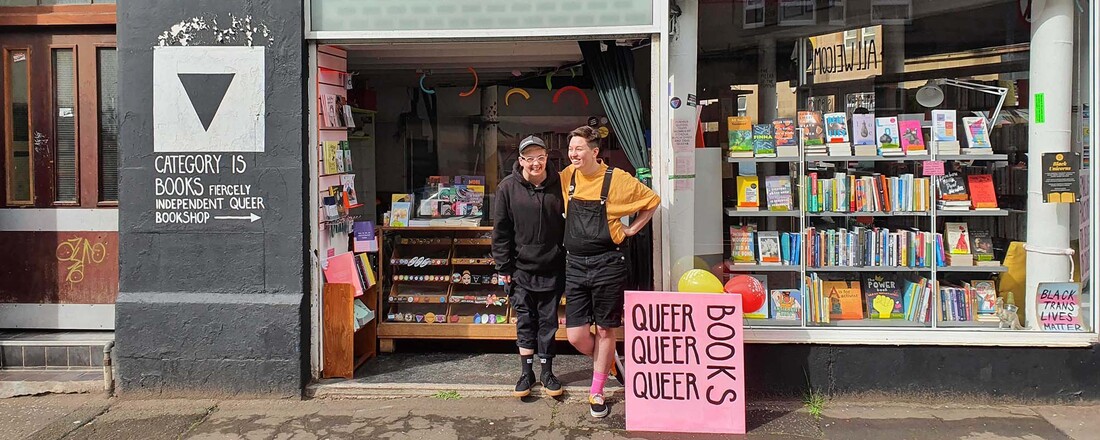Get updates from The Developer straight to your inbox Yes, please!
Queer Spaces: “Flowers blossoming in the desert of Modernity”
Artist Adam Nathaniel Furman and architectural historian Joshua Mardell talk about their book Queer Spaces: An Atlas of LGBTQIA+ Places and Spaces and the curation of an architectural canon of queer design

When artist Adam Nathanial Furman and architectural historian Joshua Mardell decided to curate the book, Queer Spaces: An Atlas of LGBTQIA+ Places and Spaces, their reasons were both professional and personal.
“Going through architecture school in the 2000s as a young queer student who came from a very activist queer background in London, it was virtually impossible to find an architectural history with which I could justify, back up or give substance to the themes and types of designs that I wanted to do,” says Furman in an interview for The Developer Podcast. “I had to start from scratch to find histories that would allow me to present work that could be passed without being ridiculed.”
“It’s really an attempt to provide a legitimate pedigree for queer existence, largely centred in the sphere of the built environment,” says Mardell, noting that having the book published by the Royal Institute of British Architects (RIBA) is critical to that purpose – to have “all these examples published by the official body in the field.”
Lavishly bound and illustrated, rather than feature a single narrative, the book is written by 55 contributors who describe and narrate how the featured spaces have been shaped by queer culture, from Christopher Street in New York to the Trans Memory Archive in Buenos Aires. In a fresh look at historical buildings, places such as Fonthill Abbey are elucidated. As Furman says, “I’ve read texts on [Fonthill] and his queerness is mentioned as a malady or as part of the mix in explaining why it’s so odd. It’s a big deal to reorient the story and place queerness is at the very core of everything. It explains why someone’s existence would lead them to creating that kind of space.”
The avoidance of a single narrator or point-of-view in the book works to subvert authorial control over the spaces. “It’s anti-Venturi,” Furman says, referring to the book, Learning from Las Vegas, suggesting it imposed Postmodern ideology onto vernacular buildings created without that intent. Instead, Furman says the multi-authored approach resists “the tendency of architects to want to stamp their ownership over a broad swathe of human creativity.”
Although the book avoids any kind of categorisation or grouping, Furman names a number of common characteristics typical of queer spaces which could be referenced in architecture. These include the act of putting together archives – collections created without institutional support or money, often illegal. “Because Queers have a very stop-start history – in many cases queer communities need to start from scratch – it’s very easy for queer history in one place to be lost,” says Mardell. “The act of putting together an archive is a way of forming a history that can be passed on and shared.”
It’s really an attempt to provide a legitimate pedigree for queer existence, largely centred in the sphere of the built environment
Another is the reappropriation of historic spaces which has a long history and is described by Furman and Mardell as an act of subversion, turning symbols of the ruling society or religion into “the very being of queerness.” “There’s a history within Catholicism but there are lots of other examples for every type of body politic,” Furman notes.
A third type, well represented in this collection, is the construction of alternative realities – or as Furman describes, “the need to construct a world that doesn’t want to kill you.” This can be found at the historic Fonthill: “This desire for the Haute Bourgeoisie-queer to create a world that is accepting of them and a loving lineage that cares about them and understands them through the construction of fantastical architectures.”
Furman says this last type is most often misunderstood in architectural circles and dismissed as being “Disney” because it “superficially looks like other things that architects hate.” Nevertheless, fantasy is an important thread that runs through the queer history of architecture.

There are other threads too – including the temporary subversion and transformation of places and the political takeovers of space through parades and other happenings. There are also a lot of nightclubs.
Furman and Mardell are emphatic that the book is above all a celebration. “To look back through architectural history and see these incredible flowers that blossomed in the desert of Modernity and the cis hetero paternalistic domination of creative society which continues very much to this day…” says Furman.
“We know that many other queer people going through the profession – most of whom I know were pushed out [of architecture] by the time they reached my age for these reasons – would feel the same and this [book] would be important for them.”
Subscribe to The Developer Podcast wherever you get your podcasts, and sign up to The Developer Weekly email to find out when new episodes go live. You can support our podcast on Patreon at www.patreon.com/thedeveloperuk
If you love what we do, support us
Ask your organisation to become a member, buy tickets to our events or support us on Patreon
Sign up to our newsletter
Get updates from The Developer straight to your inbox
Thanks to our organisation members
Become a member
© Festival of Place - Tweak Ltd., 124 City Road, London, EC1V 2NX. Tel: 020 3326 7238

